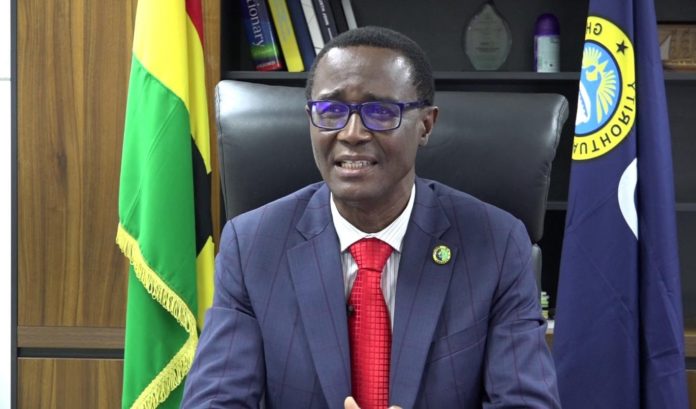
Techgh24 can confirm that come October 1, 2022, e-levy will be applied to all pay outs on the platforms of payment services providers (PSPs), and that gravely threatens financial inclusion.
The Ghana Revenue Authority (GRA) has directed the PSPs to apply e-levy to all pay outs that go through their platforms – whether going from and to wallets and accounts belonging to the same person or not.
This has created some amount of agitation among some merchants who use the platforms of those PSPs and charging entities for settlements.
Quite a number of the affected merchants actually offer digital banking services, which include micro savings (susu), which makes it easy for the unbanked and underbanked to do micro savings via mobile money.
Already the GRA has refused to grant e-levy exemptions to these persons when they transfer money from their mobile wallets into their digital micro accounts as e-deposits, and that has adversely affected the rate at which people save on those platforms.
Now GRA is asking PSPs/charging entities to also apply e-levy when these persons make withdrawals from their own digital micro-accounts into their mobile money wallets.
This is clearly counterproductive to the government’s financial inclusion agenda, because already people are cutting back on using the digital platforms to save due to the e-levy on e-deposits, and now GRA is making it worse by asking charging entities to apply e-levy to withdrawals as well.
The Sneak
It is also interesting to note that even though this new directive affects individual Ghanaians, GRA has chosen to hide behind PSPs and sneak it in on the public without making a formal public announcement about it.
What this means is that, without any formal notice from GRA to the public, if you go to withdraw money from your digital account into your mobile money wallet and you call for GHS100, you will actually get GHS98.5 without being told why it is so.
The PSP or charging entity responsible for that settlement of your withdrawal would only be applying a GRA directive without your knowledge.
The threat
The businesses of companies like Dalex Finance, Naa Sika and many others who offer micro-savings services to petty traders and other underbanked and unbanked persons are under serious threat from these illegitimate e-levy applications directed by GRA.
They have been fighting for e-deposits to be exempted from e-levy from day one, but to no avail. And while they were hoping for that anomaly to be fixed, GRA is even making things worse by double charging e-levy on their customers.
Meanwhile, these are companies who have obtained tax identification numbers (TIN) from GRA and have submitted same to the PSPs to update their details so that they will be exempted from e-levy as required by law.
The PSPs/charging entities are at their wits end because they have for months gone through all the processes to regularize the details of these merchants with their respective TIN numbers, but to no avail. They have therefore directed the affected merchants to go directly to the GRA and apply for e-levy exemption.
Interoperability
Meanwhile, the illegal e-levy charge is not only limited to digital savings accounts, but also to all transfers done via the government’s own most-touted mobile money interoperability (MMI) platforms.
Till date, GRA and its charging entities continue to charge e-levy on transfers through the MMI between wallets and accounts linked to the same Ghana Card.
All of the stakeholders – GRA, its charging entities and the custodian of the MMI, Ghana Interbank Payments and Settlements Systems (GhIPSS) have admitted that the e-levy on transfers between wallets and accounts linked to same Ghana Card is illegal, and yet none of them is fixing the problem.
What they are rather doing is pointing accusing fingers at each other.
GRA claims the charging entities need to connect their MMI channels to the e-levy common platform so that transfers via that channel will be recognized and be treated as such.
The charging entities also claim they have connected all their channels to the common platform, and they only apply e-levy to transactions after the common platform had approved the e-levy charge.
GhIPSS on its part, says they are neither a charging entity nor a tax collector, so they have no duty to connect any channels to the common platform – it is the duty of the individual charging entities to connect their channels, including MMI to the common platform.
So, the illegal e-levy charges continue on the MMI platform while each stakeholder keeps saying they are not to blame.










